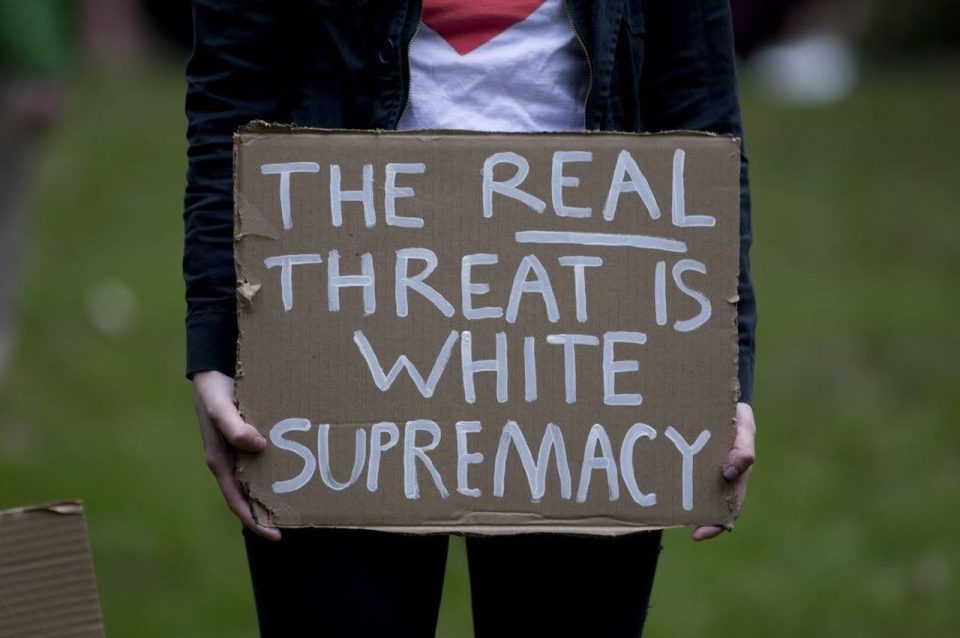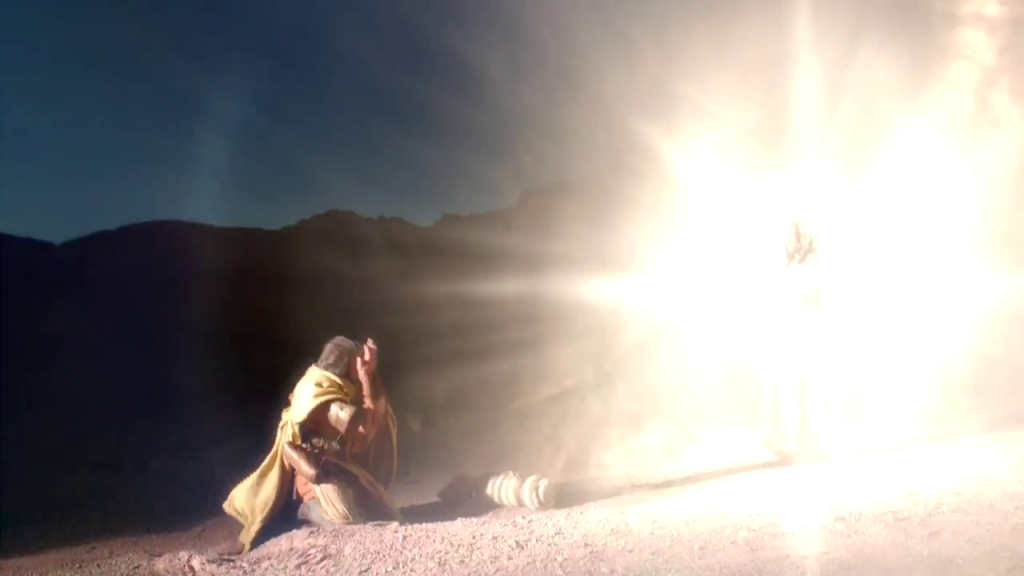What can The Road to Damascus teach us about White Supremacy?
By Orissa Arend
White supremacy is a term that has come into the public discourse in the last few years. I first heard it decades ago at a People’s Institute Undoing Racism Workshop. Back then for me, a white person, it was a startling, new idea – revolutionary and challenging. But the intervening years have brought seminars, books on the subject, lists of its manifestations, and an emerging awareness of the attending powers and privileges.
In some circles, white people have discussed it ad nauseam in an effort to understand, to undo racism, and to assuage guilt. But being white, our attempts have been mostly in the head, the intellect, generally our processing mechanism of choice. We often don’t engage the heart or our body.
Kathy Randels’ new one-woman play, The Road to Damascus, is an antidote to that. At once intensely personal, and at the same time universal, Kathy embodies Little Red, Grandmother, the Wolf, the Horseman, Saul, and Paul, weaving in our insidious tendency toward white supremacy throughout. She moves fluidly among characters with poetry, song, narrative, and dance. She invites us into the integration she is seeking between her family’s Baptist preacher history and her work in drama with women in prison over the last 25 years.

The play was directed and co-created by Odile Del Giudice who uses her background as a professional performance artist to address ancestral and collective trauma. What is our true embodied nature, she prompts us to ask. How can our true nature integrate divergent perspectives on God, race, and structures of dominance? This is where my brain, with all its “white” conditioning, begins to fog over. So let me give you a few snippets from the play that perhaps will tempt you beyond the usual rational, linear ways of dealing with good and evil, prey and predator, racism and conversion.
Imagine a stage whose props consist mainly of books – which belonged to Kathy’s preacher father and preacher grandfather – and stones which can be used for protection, revenge, killing, games, or divination. Other props include an extraordinary wolf head and a dazzling red cape.
Little Red ventures into the woods as an innocent, bearing gifts and cookies. She is tricked by the wolf, to whom innocence is an aphrodisiac. She is also lured by Saul as the Horseman. Saul leaves Red’s “present” in shreds after an ecstatic encounter, and rides off.
But Little Red’s innocence morphs into complicity with predators as she plays “cops and robbers,” and “cowboys and Indians” with the wolf. He reminds her that those games have always been sick. She gets confused about the rules and who is good. Confusion is a common fall-back position when white people feel uncomfortable.
Later still in the play she wields the sacred, deadly stones of white supremacy which Saul, in his bureaucratic obsession and religious zealoutry, has orchestrated against the “darkskins.”
Grandmother, the wisdom figure, is based to some extent on Gloria Williams (aka Mama Glo) whose recent release from prison Kathy worked with many others to achieve. Mama Glo served 52 years. Little Red doesn’t realize until late in the play that Grandmother is a “darkskin”. Grandmother tells Red that after Damascus, Saul is dead. She assures Red that he has paid for his racism and his violence in the name of the Lord. Red is not satisfied with that. She wants Saul and the King, who has imprisoned Grandmother, killed. But Grandmother says no, that wouldn’t do any good. They would just find another. Besides, she is free, she claims, even if she dies in prison. If she were white, she ruefully explains, she would be sitting on a throne.
She understands that each of us has to tame the wolf inside of us, so he can protect us and keep us honest. We cannot kill the wolf. She brings hope for a new system. But she cautions that she can’t tell the white ones what to do.
They’ve got to figure that out for themselves.
Kathy is masterful at embodying all these characters and the archetypal, dream-like associations that they carry. The music, the stage set, and the costumes assist her brilliantly. But I would have to be way beyond my present capacity for understanding Bible stories, racial history, and church dogma to really “get” the complex web of images in this play. Maybe that’s the point: Maybe I’m not supposed to be able to figure it out. Enlightenment for Paul is preceded by blindness. The play challenges me to surrender my cognitive ways of knowing in order to really see.
Kathy would like to bring the play to white churches here and elsewhere throughout Louisiana, in an effort to encourage white Christians to look at the role we have allowed Christianity to play in the creation of our inequitable legal system. She wants to invite those same folks to work on ways to repair the damage to generations of families who have been harmed by that system. The play could be part of a discussion series. I feel sure that would move the needle for any aspiring anti-racist church. If your church is interested, you can contact Kathy Randels at kathy@artspotproductions.org.

